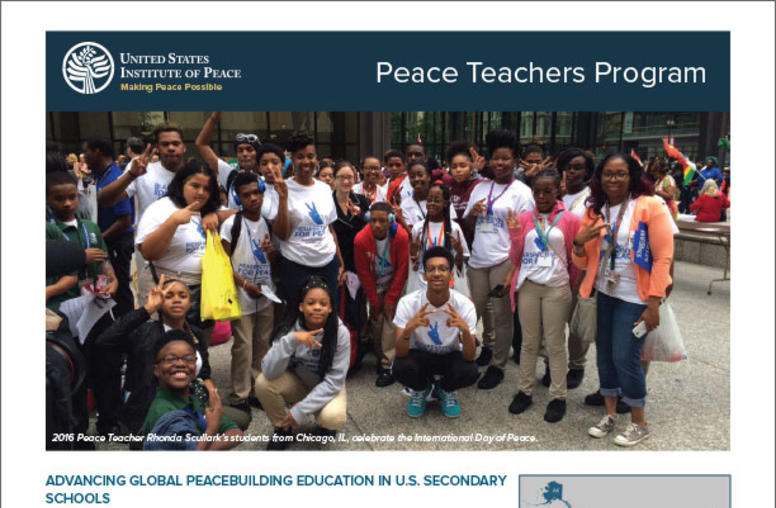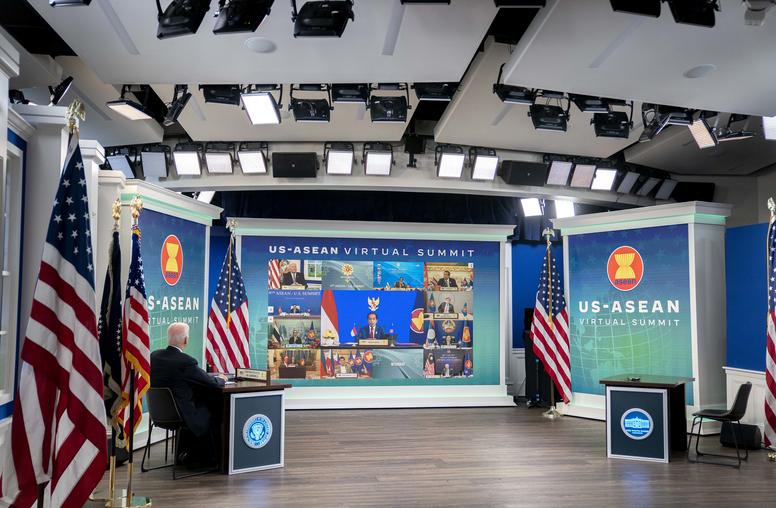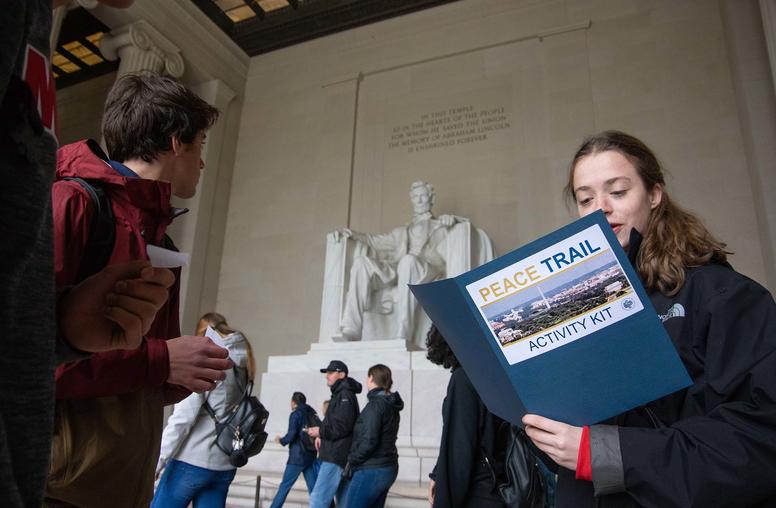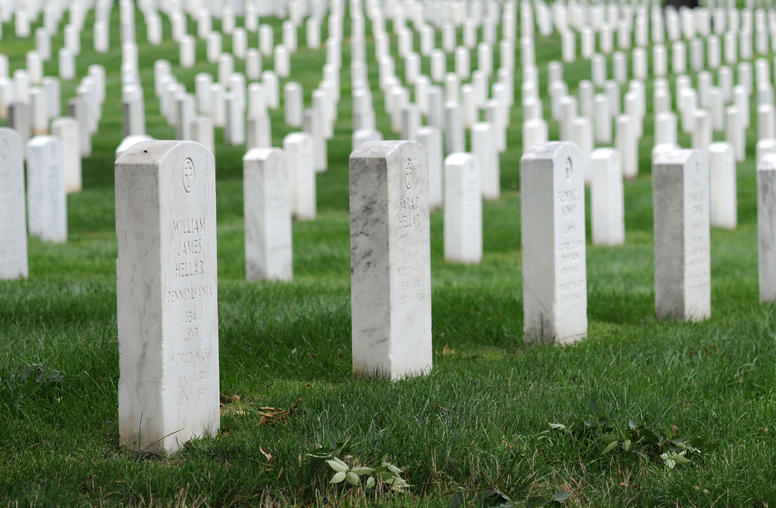"Quadrennial Defense Review Independent Panel"
On April 15, 2010, William J. Perry and Stephen J. Hadley testified before the House Armed Services Committee on the "Quadrennial Defense Review (QDR) Independent Panel" which is facilitated by the United States Institute of Peace (USIP). The QDR Independent Panel, which includes 12 appointees of Secretary of Defense Robert Gates and eight appointees of Congress, has been asked to submit a written assessment of the QDR by July 15, 2010.

On April 15, 2010, William J. Perry and Stephen J. Hadley testified before the House Armed Services Committee on the "Quadrennial Defense Review (QDR) Independent Panel" which is facilitated by the United States Institute of Peace (USIP). The QDR Independent Panel, which includes 12 appointees of Secretary of Defense Robert Gates and eight appointees of Congress, has been asked to submit a written assessment of the QDR by July 15, 2010. In a joint statement, the co-chairs said that the security challenges facing the United States today are much different than the ones faced over a decade ago.
The following are their prepared remarks:
*The views expressed here are my own and not those of the United States Institute of Peace.
Chairman Skelton and Ranking Member McKeon, thank you for this opportunity to appear before you and other members of this distinguished Committee to discuss the ongoing work of the Quadrennial Defense Review (QDR) Independent Panel.
As you know, the QDR Independent Panel, which includes 12 appointees of the Secretary of Defense, Robert Gates, and eight appointees of Congress, and is facilitated by the United States Institute of Peace, has been asked to submit a written assessment of the QDR by July 15, 2010. We are here today to give you an update on the work of the QDR Independent Panel and discuss with you the direction of our work over the coming months.
Mr. Chairman, the first Quadrennial Defense Review was released in 1997 after a number of earlier defense related studies – including the Base Force Review (1991), the Bottom-Up Review (1993), and the Commission on Roles and Missions (1995) – sought to reshape U.S. military strategy following the collapse of the Soviet Union. Given the new global security landscape at the time, the Department of Defense led the U.S. effort to maintain peace and security through the deterrence of conflict, peacekeeping efforts, and the promotion of democracy, while retaining the two Major Theater War (MTW) scenario as its primary force-shaping construct. Specifically, the 1997 QDR concluded, quote:
- U.S. defense strategy for the near- and long-term must continue to shape the strategic environment to advance U.S. interests, maintain the capability to respond to the full spectrum of threats, and prepare now for the threats and dangers of tomorrow and beyond. Underlying this strategy is the inescapable reality that as a global power with global interests to protect, the United States must continue to remain engaged with the world, diplomatically, economically, and militarily.i
Mr. Chairman, the security challenges facing the United States today are much different than the ones we faced over a decade ago. We are currently involved in two conflicts abroad. Our men and women in uniform continue to advise and support Iraqi security forces in an effort to responsibly transition and drawdown U.S. forces. In Afghanistan, our military continues to fight alongside our partners and allies to deny Al Qaeda a place of operation, to counter insurgent efforts, and to establish an Afghan security force capable of defending its people. By the end of 2010, approximately 100,000 U.S. military personnel will be in Afghanistan. There is no doubt, as Secretary Gates has stated, this is truly a wartime QDR.
In addition to ongoing military operations in Iraq and Afghanistan, the United States faces a geopolitical landscape that is increasingly dynamic and significantly more complex. Traditional state and non-state actors are highly adaptable. Information and advanced technologies are readily available. The proliferation of weapons of mass destruction and the potential for their use by terrorists remains an omnipresent threat to U.S. and global security. The international system continues to evolve with the rise of China and India. Finally, energy constraints, potential environmental changes, resource competition, communicable diseases, and population shifts are only a few of the challenges that will continue to make the geopolitical system extremely volatile. If you add the recent financial downturn and potential impending budgetary constraints, the U.S. and the Department of Defense face incredibly daunting challenges in the years ahead. But these challenges can be overcome.
Mr. Chairman, Secretary Gates and the Department of Defense deserve great credit for attempting to address all these challenges in the 2009 QDR.
It is an impressive down payment on a process that will require significant effort by the Department of Defense and the Congress in the years ahead. The QDR Independent Panel, as mandated by the Fiscal Year 2010 National Defense Authorization Act (FY10 NDAA), is directed to:
- review the Secretary of Defense’s terms of reference, and any other materials providing the basis for, or substantial inputs to, the work of the Department of Defense on the 2009 QDR;
- conduct an assessment of the assumptions, strategy, findings, and risks in the report of the Secretary of Defense on the 2009 QDR, with particular attention paid to the risks described in that report;
- conduct an independent assessment of a variety of possible force structures for the Armed Forces, including the force structure identified in the report of the Secretary of Defense on the 2009 QDR; and
- review the resource requirements identified in the 2009 QDR pursuant to section 118(b)(3) of title 10, United States Code, and, to the extent practicable, make a general comparison of such resource requirements with the resource requirements to support the forces contemplated under paragraph (3).ii
Your QDR Independent Panel plans to perform each of these tasks. The FY10 NDAA requires the QDR Independent Panel to submit a written report to the Secretary of Defense and the congressional defense committees by July 15, 2010. We will make every effort to meet this date.
Mr. Chairman, we intend to execute faithfully the intentions of Congress and conduct a thorough and comprehensive review of the 2009 QDR. As part of our initial assessment, we note that the QDR emphasizes three important points: 1) We must win our current wars; 2) Our national security requires a “whole of government” effort; and 3) We must better support our troops and their families if we intend to maintain our current operational tempo. We applaud the QDR’s effort to address the challenges currently facing the Department of Defense. However, we will examine the QDR to assess whether it is suited to the nature of future conflict and whether it provides a strategy to address future threats in a comprehensive manner. Additionally, we will examine its force-sizing construct to determine if it is compatible with the Future Years Defense Program and to assess the force structure it would produce to meet the challenges we will face over the next 20 years. And finally, we want to determine what further changes, if any, the Department must make in order to implement this QDR’s strategy fully and effectively.
To date, the QDR Independent Review Panel has met twice, once in February and again in March. While we have no conclusive findings to present to the committee at this point, we have developed a broad framework for how to proceed, and identified the topics we intend to pursue. Specifically, the QDR Panel intends to examine critically the following questions associated with the QDR:
- The Nature of 21st Century Conflict: The QDR Independent Panel will evaluate security challenges based both on the traditional construct of “potential adversaries” and on the non-traditional drivers of conflict, such as access to resources, mass migrations, and climate change, which will confront the United States over the next 20 years. The QDR Independent Panel will also review the assumptions, “trends, asymmetries, and concept of operations that characterize our military balance with potential adversaries.”
- “Whole of Government” Capabilities: The Panel will assess the integration of policies, plans, and activities of various organizations concerned with and involved in national and international security and stability. We will examine how those U.S. government departments and agencies involved in the interagency process relate to one another, with emphasis on national security, homeland security, international economics, and stabilization and reconstruction issues; and how those agencies and departments relate to the broader cast of organizations and entities focused on security and stability including NGO’s, the private sector, and multilateral organizations, such as the United Nations. The Panel will address the increasing role of the civilian Department of Defense workforce and the use of contractors in conflict zones, including their proper use, scope of tasks, oversight and accountability. Additionally, we will address the status of the efforts to create an effective expeditionary civilian capability for dealing with post-conflict or failed/ failing state situations that often require a civil-military partnership operating in conflict zones.
- Force Structure and Personnel: As mandated by Congress, the Panel will examine in detail the force sizing construct used in the QDR, the resulting recommended force structure, and “conduct an assessment of a variety of possible force structures.” The Panel will also “review the resource requirements” identified in the QDR, and “to the extent practicable, make a general comparison of such resource requirements with the resource requirements to support the forces” cited in the QDR. We will also examine the expected costs necessary to sustain a force structure and supporting end-strength – both in terms of active duty and reserve components – sufficient to perform the missions anticipated in the QDR. Additionally, accessions, career progression, healthcare, and retirement costs will all be critically evaluated in the context of how to manage the escalating costs of the All-Volunteer Force, while still ensuring adequate defense resources for acquisitions and operations – all in the context of a decade or more of projected budget deficits.
- Acquisition and Contracting: Central to the Department of Defense’s ability to perform its missions are issues related to reform of both acquisition and contracting systems. The Panel will critically assess both contract negotiation mechanisms and the acquisition process. We will evaluate the department’s ability to effectively and efficiently acquire equipment and contract with suppliers, so as to provide in timely fashion the hardware, services, and support needed by our men and women in uniform who are deployed in harm’s way. We will also evaluate the adequacy of acquisition expertise in the contracting community, the manner with which the department upgrades its IT systems, the impact of rising energy costs, and the need to build the capabilities of international partners.
- The QDR and Beyond: Since the QDR is now in its fourth iteration, the Panel plans to assess the entire QDR process. The Panel will evaluate Congressional direction and Department of Defense implementation, the proper balance between medium and longer term perspectives, strategy and programs, force structure and resources, the realistic timelines for developing future QDRs, and appropriate integration with other related reviews including the National Security Strategy (NSS), Quadrennial Homeland Security Review (QHSR), Quadrennial Diplomacy and Development Review (QDDR), the Nuclear Posture Review (NPR) and the Ballistic Missile Defense Review. The Panel will assess whether a more unconstrained, long term, and assumption-challenging process is required and how it might be achieved.
Mr. Chairman, while the QDR Independent Panel does not have specific findings to present to the committee at this time, we are working diligently to complete our report by the congressionally mandated deadline. The Panel understands that the United States is at an important crossroads, and that the 2009 Quadrennial Defense Review will serve as a roadmap for the future of our Armed Forces. Be assured that we will carefully examine that roadmap because, for benefit of our Soldiers, Sailors, Marines, Airmen, and Coast Guardsmen – and for the security of our nation, it is critical that we get it right.
Mr. Chairman, thank you for the opportunity to appear before you today. We welcome your questions and input regarding the Quadrennial Defense Review Independent Panel.
Footnotes
i William S. Cohen, Report of the Quadrennial Defense Review, Washington, DC: Department of Defense, May 1997, The Secretary’s Message.
ii National Defense Authorization Act for Fiscal Year 2010, P.L. No: 111-84, Section 1061.



